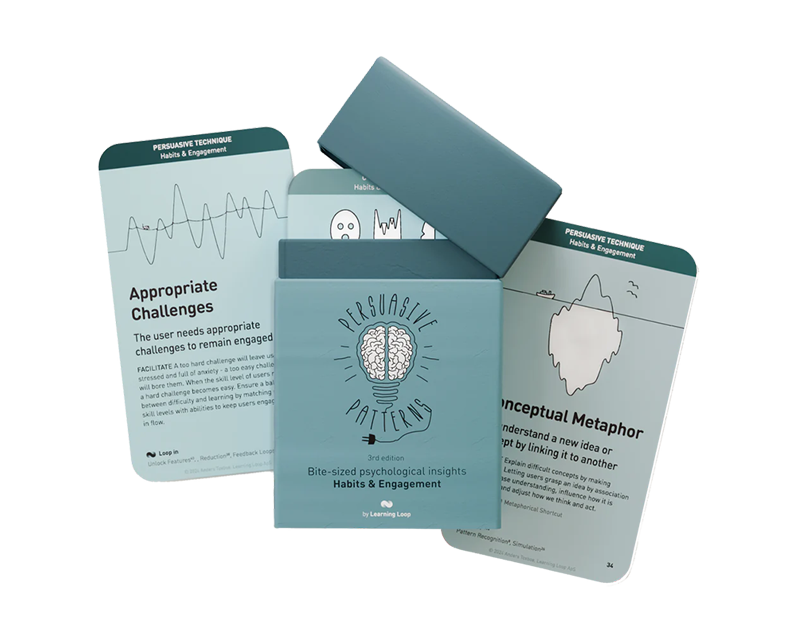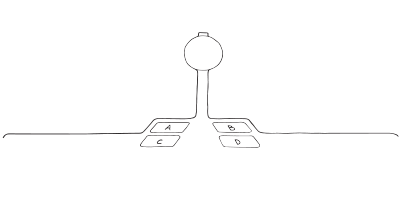
Autonomy Bias refers to the preference individuals have to exert control over their own actions and decisions.
Imagine a scenario where a group of friends is deciding where to dine out. Each person has a preference, but they want to make a collective decision. Instead of one person dictating the choice, they use a voting app that allows everyone to rank their preferences. The app then calculates the most favorable option based on everyone’s input. This process respects each individual’s autonomy, allowing them to feel in control of the decision-making process, even though the final choice is a group consensus.
Now, imagine a fitness app offering personalized workout plans that users can modify according to their preferences and goals. The app provides recommendations based on user data, but ultimately, the user decides which exercises to include or exclude. This sense of control can lead to a more committed and satisfying user experience, as the user feels that the app supports their autonomous decision-making.
The study
A foundational study in the field of psychology, conducted by Deci (1971), demonstrated how external rewards can undermine intrinsic motivation, thereby highlighting the importance of autonomy. Participants were asked to solve puzzles on their own. In the experimental condition, some participants were promised monetary rewards for each puzzle they solved, while others were not. The critical finding of the study was that participants who were offered money to solve puzzles were less intrinsically motivated to engage in the puzzle-solving activity afterward, as measured by the time they spent working on puzzles when they were not being observed and when no reward was offered.
Participants who were not offered any monetary reward spent more time solving puzzles in subsequent free-choice periods, indicating higher intrinsic motivation. Those promised money spent, on average, less than half the time on puzzles in the free-choice period than those who were not promised money (Deci, 1971).
These findings were significant because they suggested that external rewards could undermine intrinsic motivation, a concept referred to as the “overjustification effect.” The implication is that the presence of external rewards might reduce a person’s autonomy, thereby decreasing their intrinsic interest in an activity.
Deci, E. L. (1971). Effects of externally mediated rewards on intrinsic motivation. Journal of Personality and Social Psychology, 18(1), 105–115.
Autonomy Bias is the psychological effect where individuals are more likely to engage with and feel satisfied by choices and processes they control. It arises from the human desire for self-determination. Recognizing this bias helps in designing environments and systems that enhance user experience by empowering individuals to make their own choices, thereby increasing their engagement and satisfaction.
The bias can be traced back to the humanistic psychological theories of the 20th century, particularly those of Carl Rogers and Abraham Maslow, who emphasized the role of free will and self-determination in human behavior.
However, the bias itself was coined by Self-Determination Theory (SDT), established by Deci and Ryan, which identifies autonomy as one of three intrinsic needs—alongside competence and relatedness—vital for psychological health and well-being.
Autonomy is the need for self-guidance in one’s actions, reflecting choice and a sense of willingness. It’s not simply independence, but rather endorsing one’s actions at a deeply reflective level. Autonomous actions are characterized by a sense of freedom and choice in initiating and regulating one’s behavior.
This bias towards autonomy affects motivation. Autonomously motivated actions—undertaken for their inherent satisfaction—are likely to be more enduring and resilient. Autonomy is linked to higher quality engagement, improved performance, and persistence, as well as greater well-being.
SDT differentiates between autonomous motivation, which is driven by personal volition and choice, and controlled motivation, which feels compelled by external pressures.
Research across diverse settings confirms that fulfilling the need for autonomy enhances well-being. This understanding is critical for the ethical creation of environments, such as digital platforms or organizational structures, which should promote rather than hinder autonomy.
Designing products with the Autonomy Bias
The innate desire for autonomy is not just a preference; it’s a psychological imperative. Control over our environment grants certainty, energizes motivation, and can lower stress levels. This is particularly relevant when designing for behavior change, as autonomy is a cornerstone for sustained transformation.
Integrating autonomy into product design means recognizing and satisfying this psychological need. By offering choices that resonate with users’ values and priorities, you allow them to navigate through your product in a way that feels intrinsically right for them. For example, enabling users to stick with a familiar version of software for a while can diminish the anxiety that often accompanies forced updates.
The nature of the product also influences the desire for autonomy. Pleasure-driven purchases, such as those for leisure or vacations, tend to elicit a stronger demand for autonomy compared to more utilitarian acquisitions, like business-related products. In these contexts, offering more choices can significantly elevate the user experience by bolstering feelings of control and satisfaction.
Behavioral change can be effectively facilitated through what can be referred to as the ‘4As’ approach (Patrick & Williams, 2009): Ask, Advise, Assist, and Arrange.
- Ask
This step involves initiating a conversation to understand the current behaviors, preferences, and needs of the individual. It’s about actively listening and gathering information to tailor subsequent advice and assistance. - Advise
Based on the information gathered during the “Ask” step, this step involves providing informed recommendations. The advice should be clear, relevant, and actionable, offering the individual insights into potential benefits and consequences of different choices. - Assist
Once a decision has been made, this step is about providing support and tools to help the individual implement their choice. This could involve providing additional resources, guidance, or direct help to enable them to take the necessary actions. - Arrange
The final step is to plan follow-up support to ensure the continuity of the behavior change. This could involve setting up further appointments, check-ins, or identifying additional forms of support to help sustain the change over time.
Recognizing that users seek to exercise autonomy in various aspects of interaction with products, designers can employ several strategies:
- Accelerate interactions
Users often equate speed with efficiency and control. By providing immediate feedback during their interaction with an interface, you not only maintain their momentum but also reinforce their sense of control. Streamlining processes by breaking down tasks and reducing complexity can contribute to this sense of speed. - Enable customization
When users can tailor an interface to their liking, they gain a sense of ownership and freedom. Allowing for personalization such as UI themes, shortcuts, and favorite settings can significantly enhance this feeling. A minimalist approach, allowing simple changes such as themes or display settings, can cater to this need without complicating the user experience. It’s an exercise in empowering users to make the environment suit their needs and preferences. - Allow scannability
Recognizing that users often scan rather than read content in-depth, information should be presented in a scannable format. Utilizing headings, subheadings, and bullet points allows users to quickly identify information relevant to their needs. This design consideration not only respects users’ time but also supports their autonomy by not forcing a linear interaction with content. - Alllow control of timing and sequences
Allowing users to control the timing and sequence of their interactions with content caters to a variety of user preferences and familiarity levels. For instance, a new user might appreciate a guided tour of an application, while a returning user might prefer to dive straight into the interface. Similarly, providing alternative methods for customer support—beyond a mandatory chatbot sequence—respects users’ individual needs and their desired method of engagement. - Cultivate meaning
Autonomy is tightly woven with the concept of meaning. When users feel competent and perceive that they have the power to influence their environment, it heightens their emotional engagement and overall satisfaction with the product. Ensure that every choice presented carries a sense of purpose and relevance to the user. - Allow escape
Mistakes happen, and users appreciate the ability to backtrack without penalty. Features such as ‘undo’, ‘redo’, ‘skip’, and providing a clear and immediate exit route from undesired states, such as a mistaken menu choice or an intrusive pop-up, preserve the user’s sense of autonomy and control. It’s the digital equivalent of an “emergency exit” that instills confidence and comfort in navigation.
By thoughtfully integrating these strategies you can create environments that respect and enhance user autonomy, which in turn can lead to a more satisfying and empowered user experience. It’s a balance between offering meaningful choices and maintaining a clear, consistent user journey that aligns with the brand and the intended use of the product.
When applying Autonomy Bias in product design, a common pitfall is providing either too few or too many choices. Too few choices can make users feel restricted, while too many can overwhelm and lead to decision paralysis. To avoid this, designers should offer a balanced number of meaningful options that resonate with users’ needs and facilitate decision-making without causing fatigue.
Information overload can also hinder autonomy by creating confusion. To prevent this, provide clear, concise information that aids decision-making. Instant feedback on user actions can help users feel more in command, contrasting sharply with systems that leave users wondering if their inputs have been recognized.
Ethical recommendations
One potential misuse of Autonomy Bias is the creation of false choices. This occurs when a product or service presents options that give the illusion of control but are actually designed to steer the user towards a predetermined outcome. For example, default settings that are difficult to change, or “dark patterns” in user interfaces that subtly guide users to make choices against their own interests, exploit Autonomy Bias unethically.
Another concern is the use of Autonomy Bias to encourage addictive behaviors. By giving users a sense of control over their experience, they may be more likely to engage repeatedly with a platform or product, potentially to the detriment of their well-being. This is particularly relevant in the context of social media platforms and online gaming.
- Provide genuine choices
Ensure that the choices presented to users are meaningful and offer real control over their experience. Avoid false dichotomies or presenting options in a way that unduly influences the user’s decision. - Transparency
Be clear about how decisions will affect the user’s experience. If certain choices lead to data being shared or additional costs, this should be communicated upfront. Being transparent will only further the sense of autonomy. - Respect user preferences
Honor the choices users make and avoid resetting preferences without consent. If changes are necessary, inform users and provide a clear rationale. - Avoid exploitation
Do not design experiences that exploit the user’s sense of control to encourage compulsive use or to push them towards decisions that are not in their best interest. - Empower informed decision-making
Provide users with all the information they need to make choices that are best for them. This includes clear, jargon-free explanations and the ability to easily compare options. - Facilitate opt-out
Make it as easy to opt-out as it is to opt-in. Users should feel that they can withdraw or change their preferences at any time without penalty.
Real life Autonomy Bias examples
Amazon's Alexa
Amazon’s Alexa allows users to control their smart home devices through voice commands, enabling a personalized environment and a heightened sense of autonomy over their living spaces.
Nike
Nike By You provides a customization service where customers can design their own shoes. This service grants customers a creative license over the final product, enhancing the personal connection and value attributed to the customized item.
Spotify
Spotify offers listeners the ability to create their own playlists and tailor their listening experience based on individual musical tastes, providing a strong sense of control over the listening experience.
Trigger Questions
- How do we ensure the choices we provide are meaningful and not overwhelming?
- Are we allowing users to make informed choices that reflect their values and preferences?
- What measures have we put in place to enable users to easily reverse or change decisions?
- In what ways can we streamline the decision-making process to respect the user's time and reduce complexity?
- How do we balance user autonomy with guidance to prevent users from feeling lost or unsupported?
- What feedback mechanisms can we implement to validate the user's decisions and reinforce their sense of control?
Pairings
Autonomy Bias + Cognitive Dissonance
(keep existing beliefs) �aWhen users are presented with choices that align with their existing beliefs, they are more likely to engage with a product or service because it reinforces their sense of self and their worldview. This alignment can create a positive feedback loop where the user’s beliefs are continuously affirmed, strengthening their connection to the product. Design experiences that affirm the user’s beliefs by providing choices that reflect those beliefs. For example, an eco-friendly product might offer choices that allow users to engage in environmentally responsible behavior, which aligns with their values and reduces cognitive dissonance.

We strive to feel in control
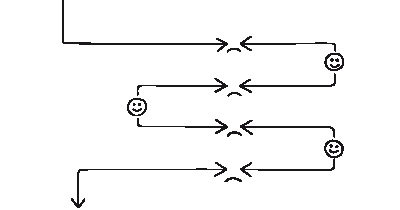
When we do something that is not in line with our beliefs, we change our beliefs
Autonomy Bias + Cognitive Dissonance
(to adopt new beliefs) �aIntroducing choices that gently challenge users’ beliefs can lead to cognitive dissonance, which can be a catalyst for change. When done respectfully and subtly, it can encourage users to reconsider their beliefs and potentially adopt new ones that are in line with the new choices they are making. Introduce new perspectives or choices that are adjacent to the user’s existing beliefs, encouraging them to explore new ideas without feeling coerced. This could be done through features that expose users to new content or viewpoints, with the option to engage further if they choose.

We strive to feel in control

When we do something that is not in line with our beliefs, we change our beliefs
Autonomy Bias + Limited Choice
Offering a curated set of options can empower users by making the decision-making process simpler and more manageable. This approach respects the user’s need for control while acknowledging the paradox of choice, where too many options can lead to indecision and dissatisfaction. Curate choices to reflect the most relevant or popular options, or use algorithms to suggest a personalized set of choices. This helps users feel empowered by their decision-making without being overwhelmed by too many options.

We strive to feel in control
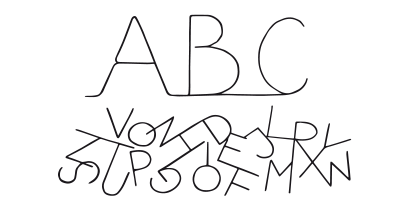
We are more likely to make a decision with fewer options to choose from
Autonomy Bias + Recognition over Recall
By designing interfaces that make important information readily available at the point of decision, users can make choices based on recognition rather than recall. This reduces cognitive load and supports a feeling of competence, which is closely tied to autonomy. Use design elements like tooltips, inline help, or contextual overlays to provide information at the moment it is needed. This helps users make informed choices without the burden of having to remember complex information, thus supporting their autonomy in the decision-making process.

We strive to feel in control
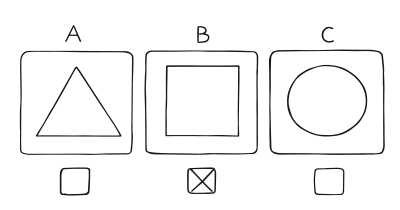
We are better at recognizing things than we are recalling them from memory
Autonomy Bias + Feedback Loops
By giving users control over actions that result in immediate feedback, designers can create a powerful sense of agency. For instance, customization features in a product that immediately show changes can reinforce the user’s sense of autonomy. Ensure feedback is timely, relevant, and directly tied to the user’s choices to reinforce the sense of autonomy.

We strive to feel in control
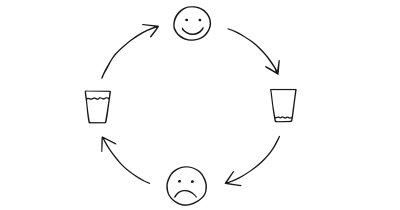
We are influenced by information that provides clarity on our actions
Autonomy Bias +
Self-Monitoring
Tools that allow users to track their behavior or progress can enhance the feeling of control. When users autonomously choose to engage with self-monitoring features, they are more likely to find the experience rewarding.

We strive to feel in control
Autonomy Bias + Appropriate Challenges
Challenges that are well-matched to a user’s skill level can increase engagement. When users choose their challenges, they exercise autonomy, which can lead to greater satisfaction. An educational app could let learners choose the difficulty of their quizzes, thus catering to their sense of competence and control. Offer a range of challenges and let users select based on their comfort level, ensuring that each challenge is still within their ability to complete with effort.

We strive to feel in control

The user needs appropriate challenges to remain engaged
Autonomy Bias + Achievements
Achievements recognize users for their actions, and when users can set personal goals to achieve, it enhances their autonomy. A professional networking site might allow users to set goals for networking, and upon reaching these goals, they earn badges or recognition. Allow users to set personal achievement goals and provide clear pathways and feedback on how to reach them, making the achievements feel more personal and under the user’s control.

We strive to feel in control

We are engaged by activities in which meaningful achievements are recognized
Autonomy Bias + Status + Levels
Gamification elements like status and levels can be used to give users a sense of progression and control over their journey. Users feel empowered as they have the autonomy to reach new levels based on their actions. Design a clear path of levels or status that users can achieve through engagement. Ensure that the progression feels within the user’s control and that each level up is a result of their choices.

We strive to feel in control

We constantly look to how our actions improve or impair how others see us

Use levels to communicate progress and gauge users' personal development
Autonomy Bias + Tailoring
Personalization and customization options that tailor the experience to the user’s preferences can enhance the feeling of autonomy. Allow users to tailor their experience through customizable interfaces, personalized content, and adaptive functionalities.

We strive to feel in control

Adapt the offerings of a system to match individual users- needs and abilities
Autonomy Bias + Priming Effect
The information and cues presented to users can prime them to feel more in control of their decisions. Use language and imagery that reinforce the user’s power to choose and the effectiveness of their decisions.

We strive to feel in control

Decisions are unconsciously shaped by what we have recently experienced
A brainstorming tool packed with tactics from psychology that will help you build lasting habits, facilitate behavioral commitment, build lasting habits, and understand the human mind. It is presented in a manner easily referenced and used as a brainstorming tool.
Get your deck!- Self-determination theory and the facilitation of intrinsic motivation [ by Ryan & Deci
- The Locus of Choice [ by Botti & McGill
- Self-determination theory at Wikipedia (en)
- Deci, E. L., & Ryan, R. M. (1985). Intrinsic motivation and self-determination in human behavior. Psychological Inquiry, 3(4), 319–348.
- Bandura, A. (1977). Self-efficacy: Toward a unifying theory of behavioral change. Psychological Review, 84(2), 191–215.
- Ryan, R. M., & Deci, E. L. (2000). Self-determination theory and the facilitation of intrinsic motivation, social development, and well-being. American Psychologist, 55(1), 68-78.
- Thaler, R. H., & Sunstein, C. R. (2008). Nudge: Improving decisions about health, wealth, and happiness. Yale University Press.
- Vohs, K. D., & Baumeister, R. F. (2004). Understanding self-regulation: An introduction. In R. F. Baumeister & K. D. Vohs (Eds.), Handbook of self-regulation: Research, theory, and applications (pp. 1-9). Guilford Press.
- Seligman, M. E. P. (2002). Authentic happiness: Using the new positive psychology to realize your potential for lasting fulfillment. Free Press.
- Turton, C. (2004). Dependence and autonomy in old age: An ethical framework for long-term care. Australasian Journal on Ageing, 23, 156-157.
- Patrick, H., & Williams, G. C. (2009). Self-determination in medical education: Encouraging medical educators to be more like blues artists and poets. Theory and Research in Education, 7(2), 184-193.
- Wachner, J., Adriaanse, M., & de Ridder, D. D. (2020). And How Would That Make You Feel? How People Expect Nudges to Influence Their Sense of Autonomy. Frontiers in Psychology, 11.
- Stiglbauer, B., & Kovacs, C. (2017). The More, the Better? Curvilinear Effects of Job Autonomy on Well-Being From Vitamin Model and PE-Fit Theory Perspectives. Journal of Occupational Health Psychology, 23, 520–536.
- Cullati, S., Courvoisier, D., Charvet-Bérard, A., & Perneger, T. (2011). Desire for autonomy in health care decisions: a general population survey. Patient Education and Counseling, 83(1), 134-8.
- Alonso-Stuyck, P., Zacarés, J., & Ferreres, A. (2018). Emotional Separation, Autonomy in Decision-Making, and Psychosocial Adjustment in Adolescence: A Proposed Typology. Journal of Child and Family Studies, 27, 1373-1383.
- Self-Determination Theory by Anders Toxboe
